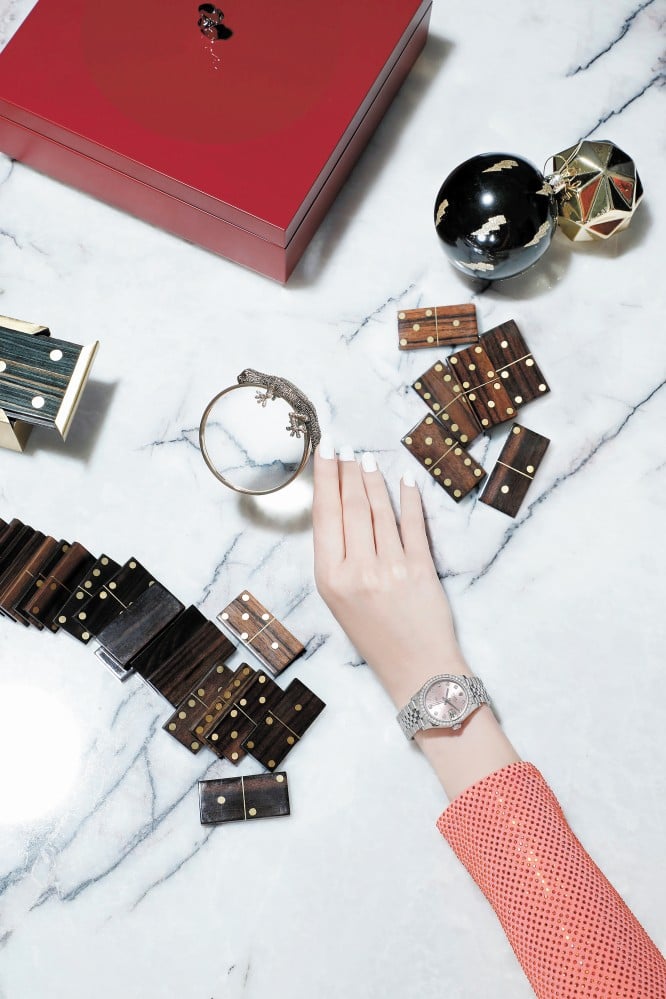Opinion / How health, quality of life and social responsibility are changing luxury – the megatrends driving the rich to switch from Rolex to Apple Watches, and prompting brands like Gucci to embrace inclusivity

Scientists argue over how long it takes to form a habit – some say as little as 21 days, others two months or more – but it’s safe to say a year of working differently, living differently and interacting differently will leave its mark on future behaviours and preferences.
In a time of transition, the incumbents always argue that people will never change. Until they do

Since Apple launched their first watch, the Swiss watch industry has been in decline. The pandemic accelerated this, with Morgan Stanley’s latest report, “King Rolex”, stating that the wider Swiss watch industry suffered a decrease of 21 per cent in value and 33 per cent in volume in 2020.

This should be a wake-up call. When companies believe that they are immune to shifts in consumer sentiment and don’t lead the change, then they will be obsolete at one point. Why is this change so drastic? Équité and IMS conducted an A.I. powered study to analyse how consumer sentiment has shifted during the pandemic. Three megatrends emerge when it comes to luxury: health, quality of life and social responsibility.
You would not connect these at first glance to traditional watchmaking. But when consumers start to care about health and quality of life, connected functions like the ones that the Apple Watch is offering – fitness reminders, permanent heart rate monitoring, EKG functionalities, sleep tracking and even calendar notifications – become less of a gimmick than a central reason for using these devices. These lifestyle realities can’t be ignored and most people won’t wear two time pieces in parallel.

Luxury also needs to be seen to be innovative and influential. Doing more of the same over time is the opposite of innovation and decreases brand equity until a tipping point is reached where consumers move away. In my opinion, the Swiss watch industry will have to provide answers for the solutions that consumers are looking for.
At the same time it has to develop more emphasis on circular business models centred around customers. I am always surprised how little watch companies are doing for their customers. There is little interaction and follow-up after the purchase and too much reliance on the traditional wholesale model. This has put the entire industry at a structural disadvantage to direct-to-consumer brands like Apple. Reinvention will be needed to turn the trend around. The clock is ticking, so to speak.
The beauty industry is another great example. While the luxury tier was relatively stable for many years, with few brands challenging the status quo of the mostly decades-old leaders, the last few years have seen unprecedented growth among new brands. These too follow the direct-to-consumer principle, are often data-driven companies and have a strong following thanks in part to relevant content they offer on top of the products they sell. This shows that the future of luxury is in creating relevancy for an audience-of-one, fully personalised, in real-time, reacting to fast-shifting sentiments.

But the luxury tier will have to go further. The third megatrend of social responsibility is shaping the future of luxury faster than most brands are able to follow. Many beauty brands claim to be sustainable and natural, but very few are.
JK7, the latest brainchild of Jurlique founder Jurgen Klein, was launched shortly before the pandemic with the aim of producing not just the best natural skin care, but the best skin care money can buy. He focuses on ultra-high concentrates of the rarest and most potent natural essential oils and herbs and produces all batches by hand in Hawaii to take advantage of the purity of the air. When the word got out, celebrities around the world became obsessed with the products that retail between US$500 and US$2,000.


What can we learn from these examples? It is critical for brands to understand consumer sentiment shifts as they happen. Health, quality of life and social responsibility are driving purchasing decisions, even for products that cost hundreds of thousands of dollars. The youngest consumers, Gen Zers and young millennials especially, pay attention to how brands lead the way. They are more interested in those that innovate than in those that sit on past achievements.
The future of luxury could be exciting – but not all brands in the space will have a future. Tradition means nothing if it does not translate into tangible and relevant consumer benefits today. In a time of transition, the incumbents always argue that people will never change. Until they do. We are in new times; shifts in sentiment are bigger and happen faster than ever before. The ability to create extreme value amid such seismic change will determine which brands will be the future leaders in luxury.
Want more stories like this? Sign up here. Follow STYLE on Facebook, Instagram, YouTube and Twitter.

- The uber-wealthy are replacing their Pateks and Rolexes with smartwatches for their health functions and ubiquity amid growing health and security concerns
- Disruptive brands like Drunk Elephant and JK7, from Jurlique founder Jurgen Klein, bring natural ingredients and ethical implications to the fore